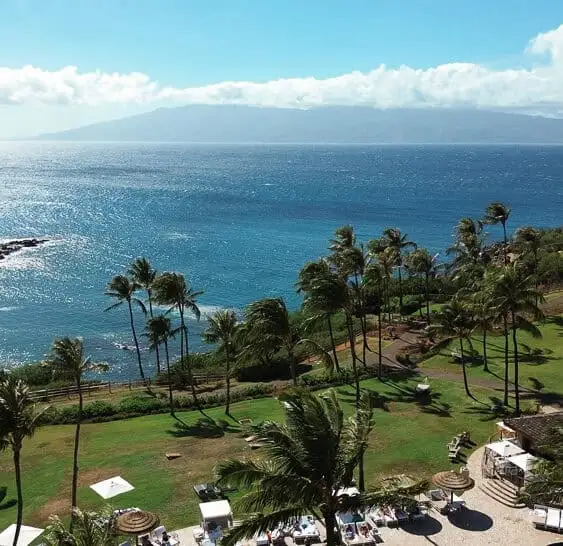Rome may boast unique history, but its crowds of tourists are the same—if not worse—as many of Europe’s other popular cities. Meanwhile, Milan receives mixed reviews, leaving many tourists feeling like the cosmopolitan city is overrated.
We’d never say to skip Rome (the city is bustling for good reason), but when you’re ready to experience more authentic local culture and get some breathing room, Italy’s hidden gems await.
These are the most underrated cities in Italy:
1. Bologna
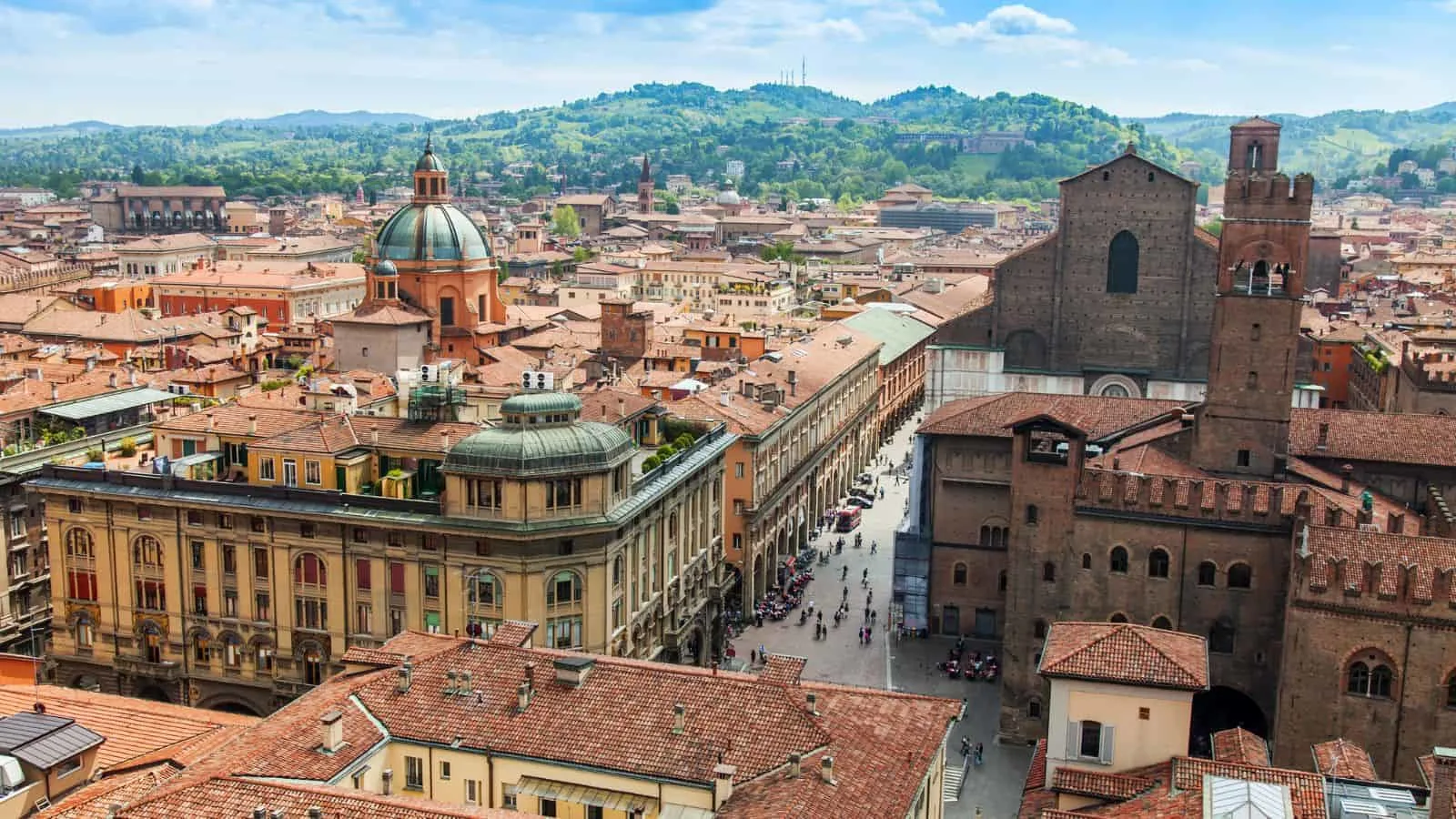
Italy is a culinary country, and Bologna is arguably its food capital. This city is the birthplace of tagliatelle al ragù, a silky pasta coated in rich meat sauce. Other local specialties include tortellini en brodo (stuffed pasta in broth) and mortadella, which can be found in Quadrilatero, Bologna’s ancient market district. Delis, pasta shops, bakeries, and butchers come together to sell aged Parmigiano-Reggiano, balsamic vinegar from nearby Modena, and Italy’s famous cured meats. At Osteria del Sole, a wine bar in this neighborhood, you can bring your own food and pair it with their local Romagna region wines.
Work off all that pasta by climbing Le Due Torri. The view at the top of Torre Asinelli justifies the 498-stair trek. On the ground, the University of Bologna is the oldest in the world, dating back to 1088. At the university’s Anatomical Theatre, they used to dissect bodies for science, but these days, it’s merely a tourist attraction.
2. Cagliari
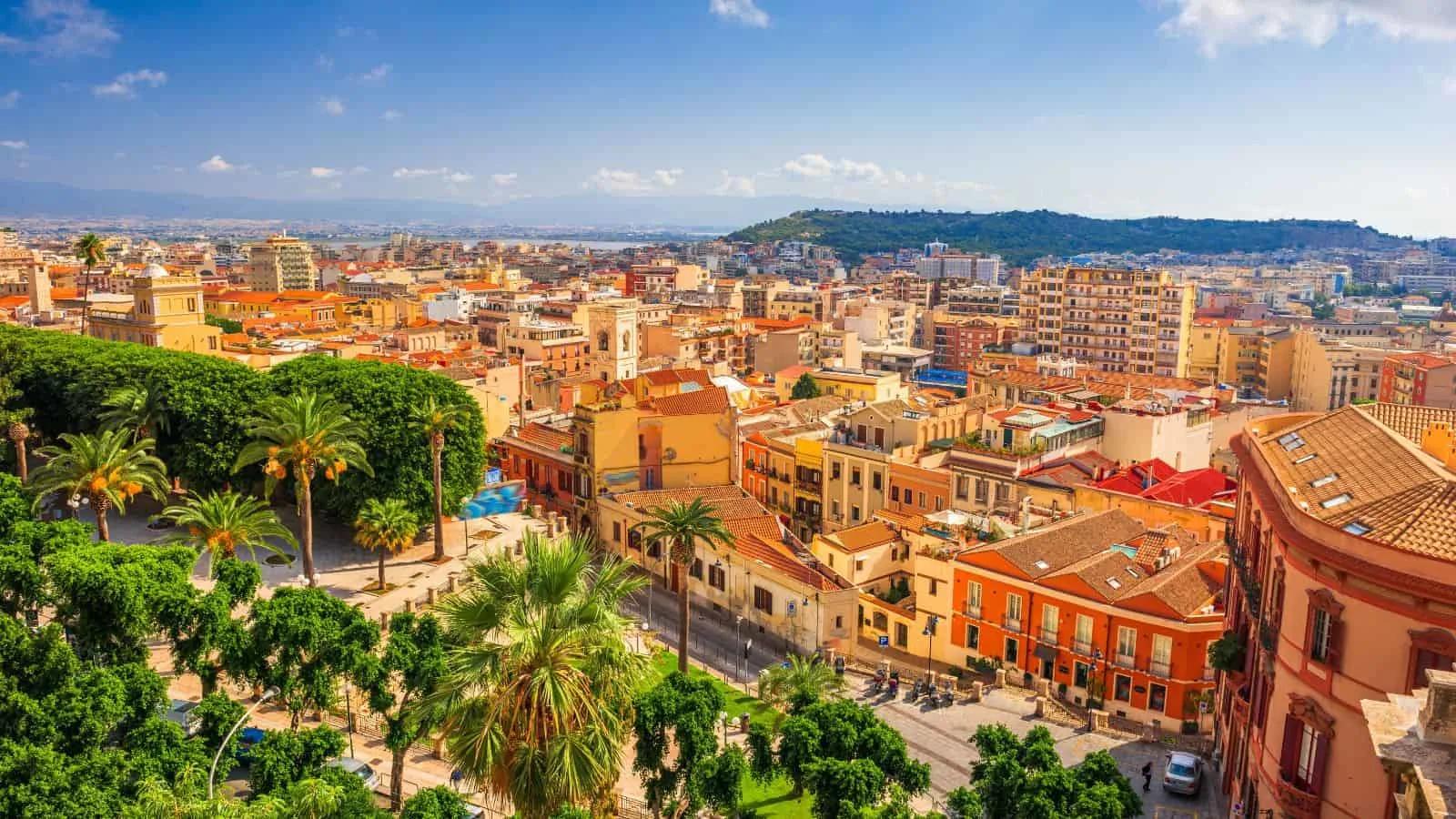
Cagliari, the sun-drenched capital of Sardinia, is the perfect place to escape whatever’s stressing you out back home. Castello, the city’s ancient hilltop district, is waiting to be explored, filled with landmarks like the Cattedrale di Santa Maria and the Torre dell’Elefante, where you see city landscapes, the harbor, and the shimmering Mediterranean sea.
When you’re ready to catch some rays, Poetto Beach stretches for miles with soft white sand and crystal-clear water. Alternatively, hop on a boat to explore some of the secluded coves and hidden beaches nearby. When swimming has you starving, dig into local Sardinian cuisine like culurgiones, a stuffed pasta filled with potatoes, mint, and pecorino cheese, at the likes of Su Cumbidu, a rustic local restaurant.
3. Verona
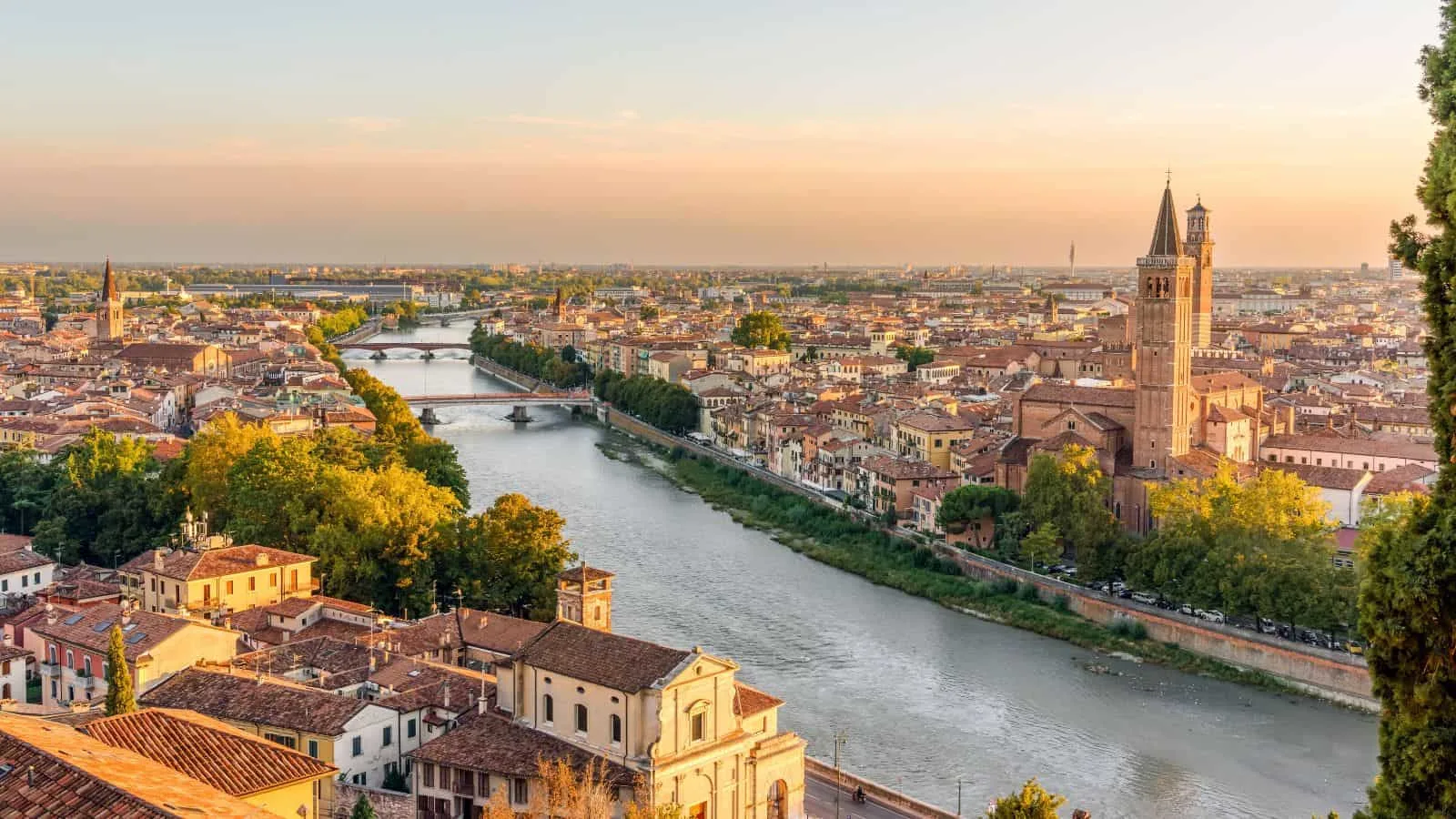
Verona is one of Italy’s most romantic cities, if anything, for being the setting for Shakespeare’s famous “Romeo & Juliet.” At Casa di Giulietta (Juliet’s House), legend has it that touching the statue of Juliet’s right breast will bring you luck in love. Even if you don’t believe the fable, Juliet’s balcony is a wonderful photo opportunity. While you’re there, write a letter to the star-crossed heroine—the Secretaries of Juliet, a group of locals, will respond.
The Colosseum in Rome receives the hype, but Arena di Verona—though smaller—is just as impressive. The Roman amphitheater is better preserved and less crowded, and it still hosts concerts and operas by the likes of Andrea Bocelli. Piazza delle Erbe, the city’s market square, doesn’t require an admission fee and is primed for watching both people and architecture with a glass of wine or a bite.
4. Lucca
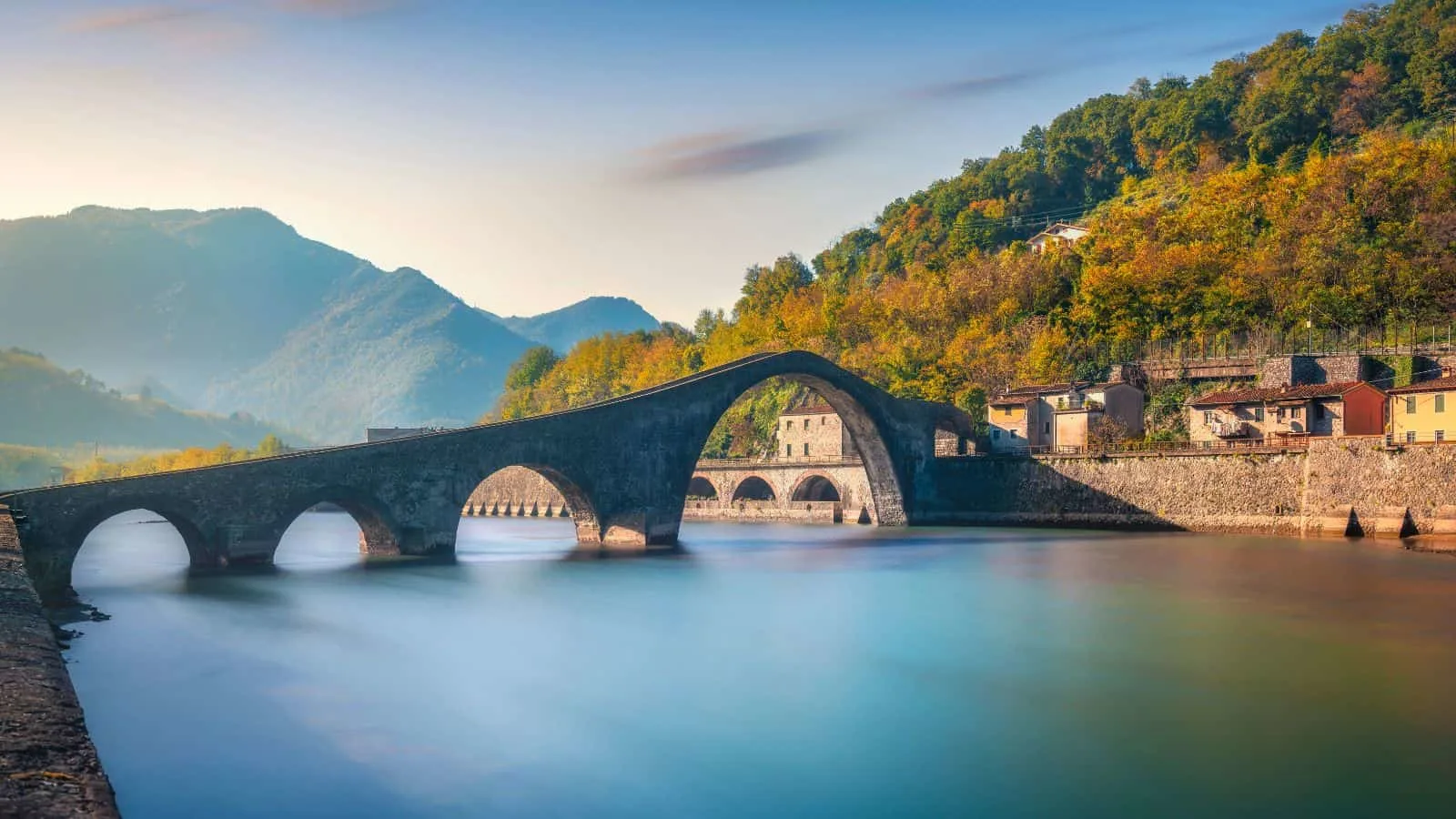
Overshadowed by nearby Florence and Pisa, Lucca is a Tuscan dream without the tourist traps of more frequented cities in the region. Where Pisa has its leaning tower, Lucca has Torre Guinigi watching over the city, with a centuries-old tree growing out of it. While the Uffizi in Florence is still worth a visit despite its popularity, the Museo Nazionale di Villa Guinigi in Lucca has many notable works of art without the crowds.
Renaissance walls surround Lucca, acting like an elevated park in today’s times, separating the city from the Tuscan countryside. Inside these city limits, Piazza dell’Anfiteatro, built on top of an ancient Roman amphitheater, is surrounded by colorful buildings like something out of a Wes Anderson film. A 10-minute walk away, dinner awaits at Ristorante Giglio, a Michelin-starred restaurant bringing storied Italian cuisine to modern palates.
5. Perugia
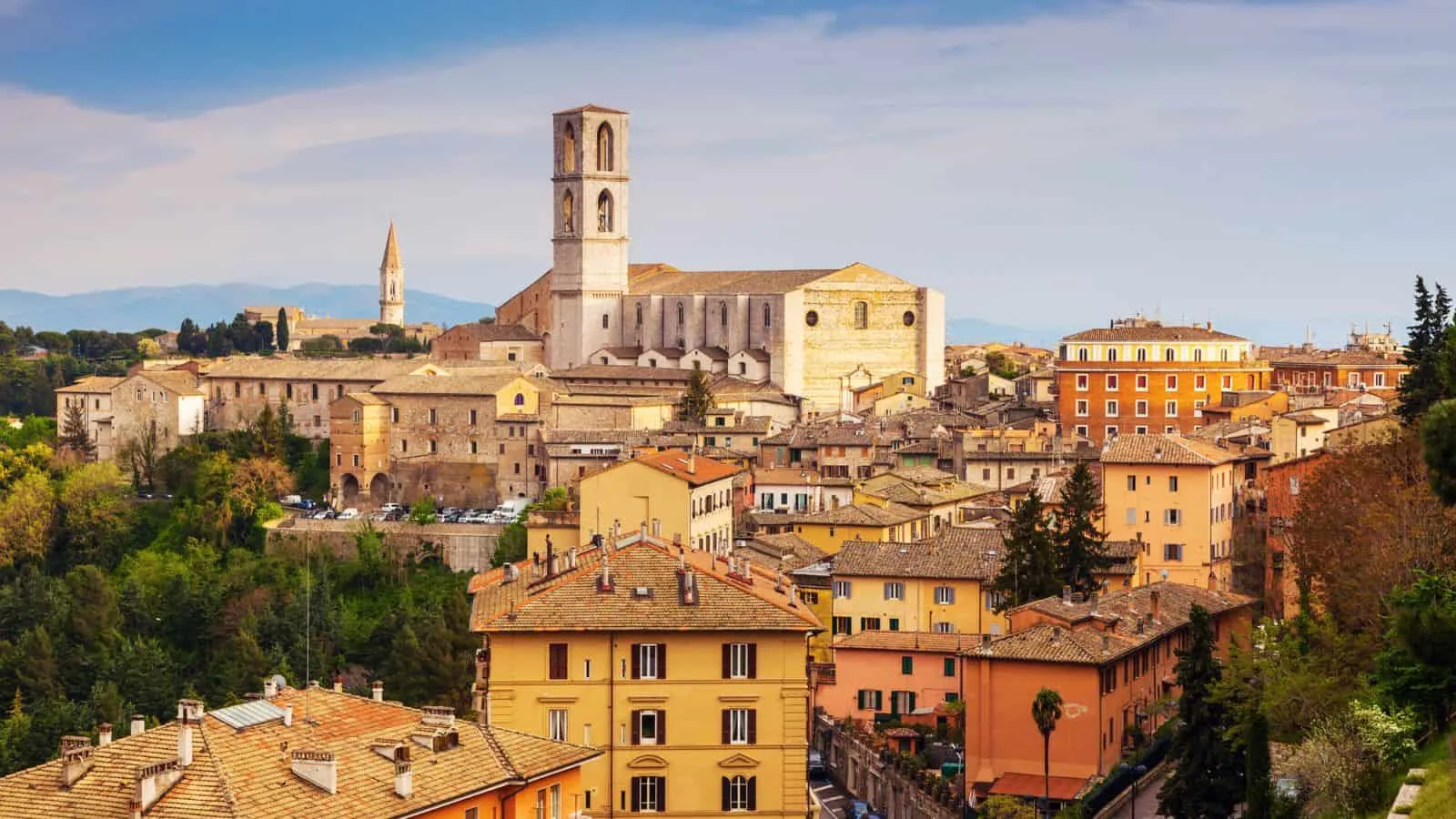
Umbria is underrated as a region, acting as a quieter version of Tuscany. Its capital, Perugia, is filled with medieval splendor—and comparatively few tourists. Sandri, an old-school pastry shop in existence since 1860, serves torta al testo (stuffed flatbread) on Corso Vannucci, the city’s main pedestrian street and social center.
As you wander down it, you’ll eventually hit art museums like Galleria Nazionale dell’Umbria and Palazzo dei Priori, leading up to Piazza IV Novembre. Cross the square, passing Fontana Maggiore to step into Cattedrale di San Lorenzo’s warm glow. If you’re visiting in October, you’ll pass chocolate vendors lining the streets of this sleepy city center during EuroChocolate, one of the largest festivals in the world for the candy. In July, you can still learn about chocolate making at Perugina Casa del Cioccolato but will instead be treated to the sounds of jazz against the city’s medieval architecture during the Umbria Jazz Festival.
6. Lecce
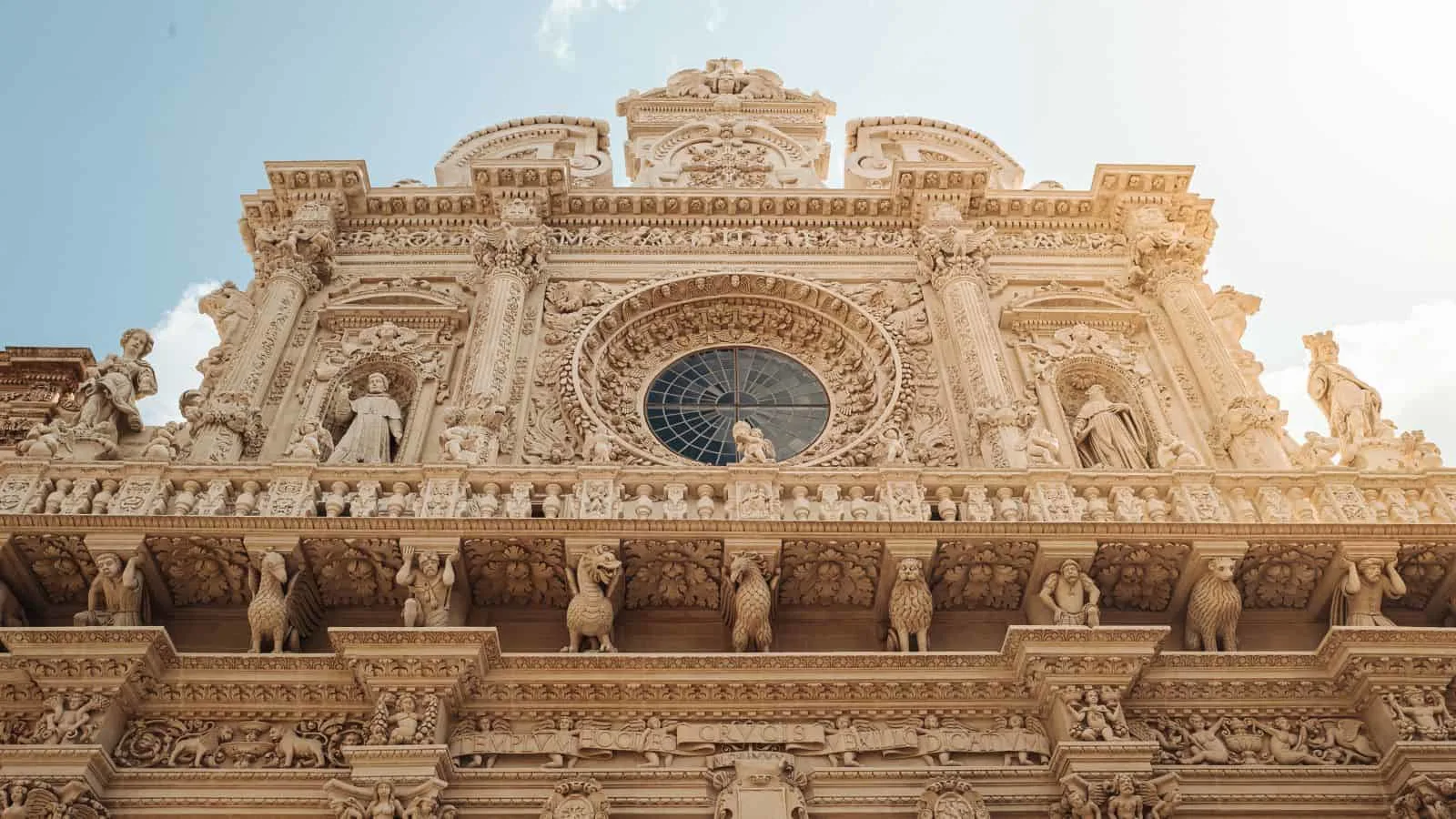
Lecce is a beautiful Baroque fever dream in the heel of Italy’s boot. The city, part of Puglia, is the Florence of the South, and the Basilica di Santa Croce is its crown jewel. Like Florence, town squares are attractions in and of themselves here, like the Piazza del Duomo and the Piazza Sant’Oronzo, which has the remains of a massive Roman amphitheater in it.
Pasticciotto is the city’s signature pastry—a flaky, buttery shell filled with creamy custard. Grab one from Caffè Alvino for a pick-me-up, or for something more substantial, find a cafe for puccia, a local sandwich made from pizza dough and stuffed with cheese, cured meats, and veggies. Dinner is best served at Le Zie Trattoria for orecchiette pasta, which is traditionally made with local greens like cime di rapa.
7. Trieste
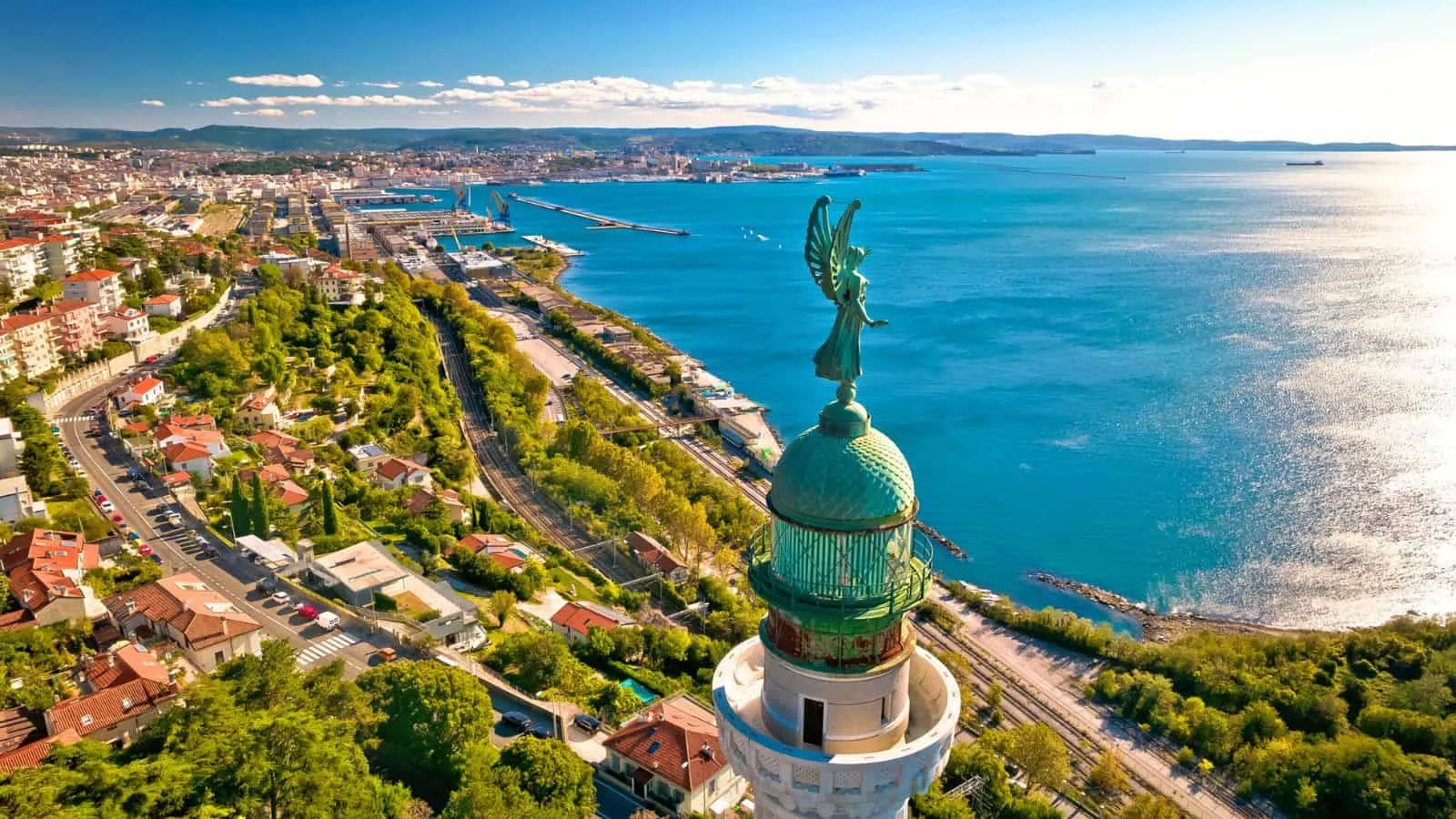
Trieste is caught between worlds. Located where Italy meets Slovenia and nearby Croatia, the city’s northeastern location makes it easy to miss and unlike anywhere else in the country, thanks to its Habsburg architecture. This cultural contrast is seen in Piazza Unità d’Italia, which has a neo-classical, Austro-Hungarian flair. Here, the sparkling Adriatic Sea is on one side, and palatial buildings greet you on the other.
Miramare Castle is pristine, with all white towers and gardens perched over the sea. These idyllic surroundings make it easy to understand why writers like James Joyce, Italo Svevo, and Umberto Saba were inspired in Trieste. That, and nearby Val Rosandra, a natural reserve just outside the city with views over Slovenia. Grotta Gigante, a giant cave, is another top attraction for the adventurous crowd, filled with stalactites and stalagmites.
8. Bari
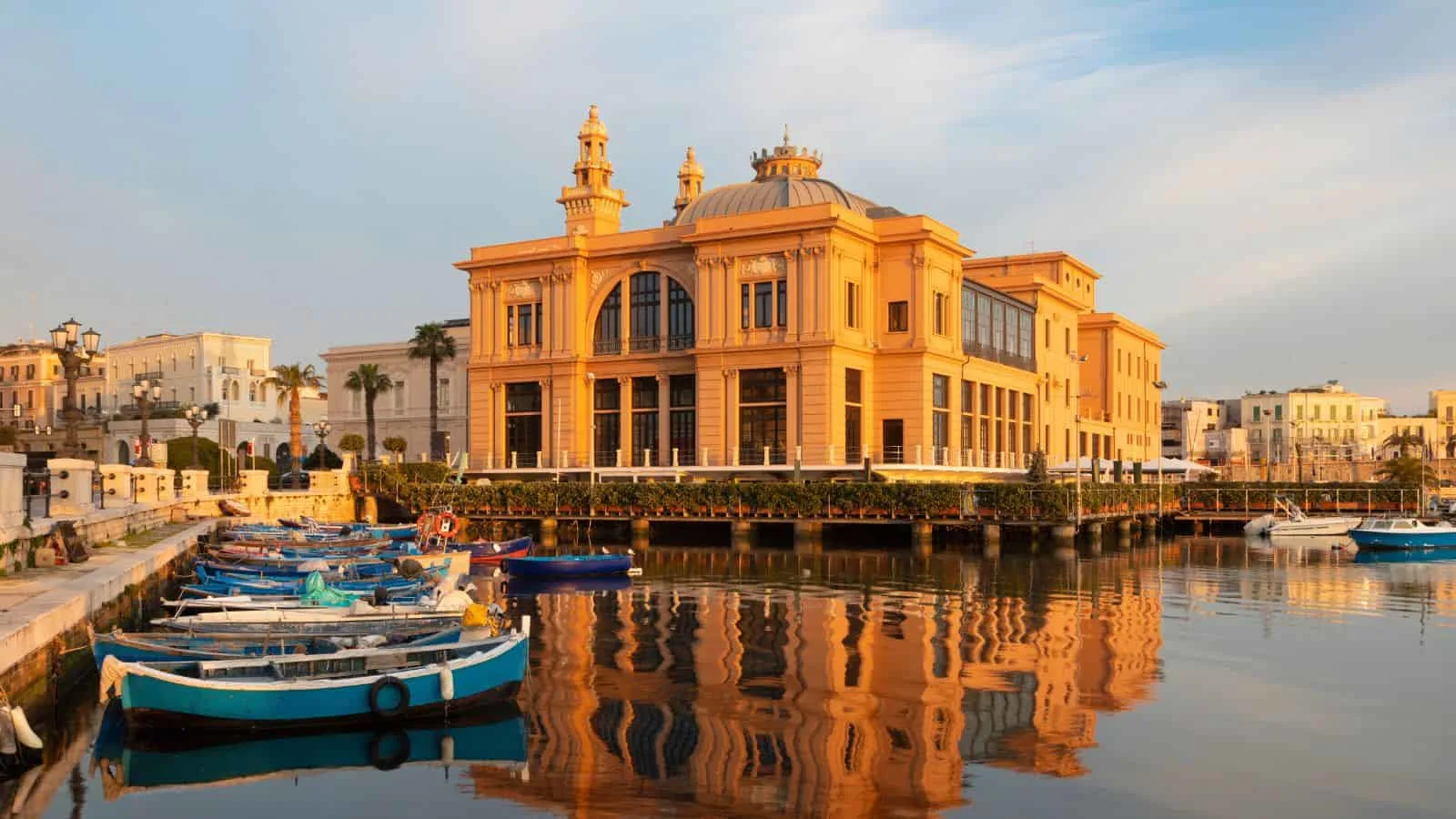
The capital of Puglia, Bari, makes a great case for skipping better-known cities on Italy’s Adriatic coast, such as Venice. The narrow streets of Bari Vecchia (Old Bari) are the pulse of the city. Come without a plan and wander. Eventually, you’ll discover a centuries-old church, a tiny piazza with locals sipping espresso, or Strada delle Orecchiette, where the nonnas line the sidewalks, rolling out ear-shaped pasta.
Though this town’s seaside location embodies summer, it has surprising ties to Christmas. Basilica di San Nicol, a Romanesque basilica, is dedicated to Saint Nicholas, who inspired Santa Claus and houses his remains. More history can be uncovered at Castello Normanno-Svevo, a 12th-century fortress built by the Normans and then expanded by Frederick II. As you work up an appetite while sightseeing, go down to Lungomare (the seafront promenade) and end your day at a restaurant like Al Pescatore or Ristorante Biancofiore for fresh fish and shellfish.
9. Genoa (Genova)
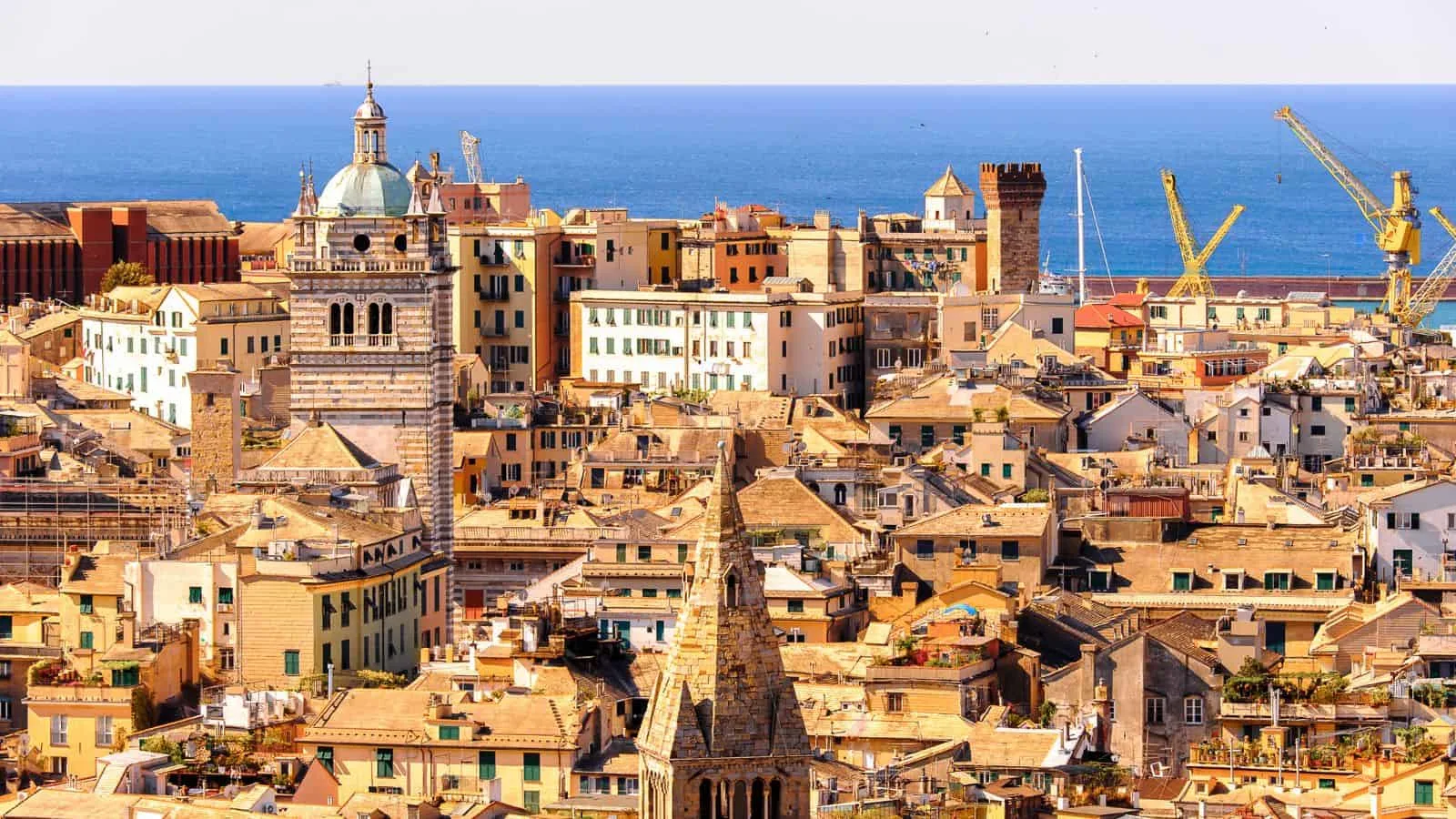
Dark, medieval streets known as caruggi take over Genoa’s old town, eventually opening up to tiny piazzas where locals sip espresso and hang their laundry between buildings. Piazza de Ferrari is the most well-known of these squares, surrounded by a mix of Renaissance and modern buildings. Continue to the Via Garibaldi, where Palazzo Rosso, Palazzo Bianco, and Palazzo Doria Tursi house large art collections in regal spaces.
Genoa’s real claim to fame is pesto. Across the city, pesto alla Genovese, made with fragrant basil, pine nuts, garlic, Parmesan, and olive oil, is ground up fresh and served over trofie pasta or trenette at spots like Cavour modo21. If you just need a casual bite, grab a slice of focaccia, another local specialty, at Antico Forno della Casana or Focaccia e Dintorni to dip in the green sauce.
10. Ravenna
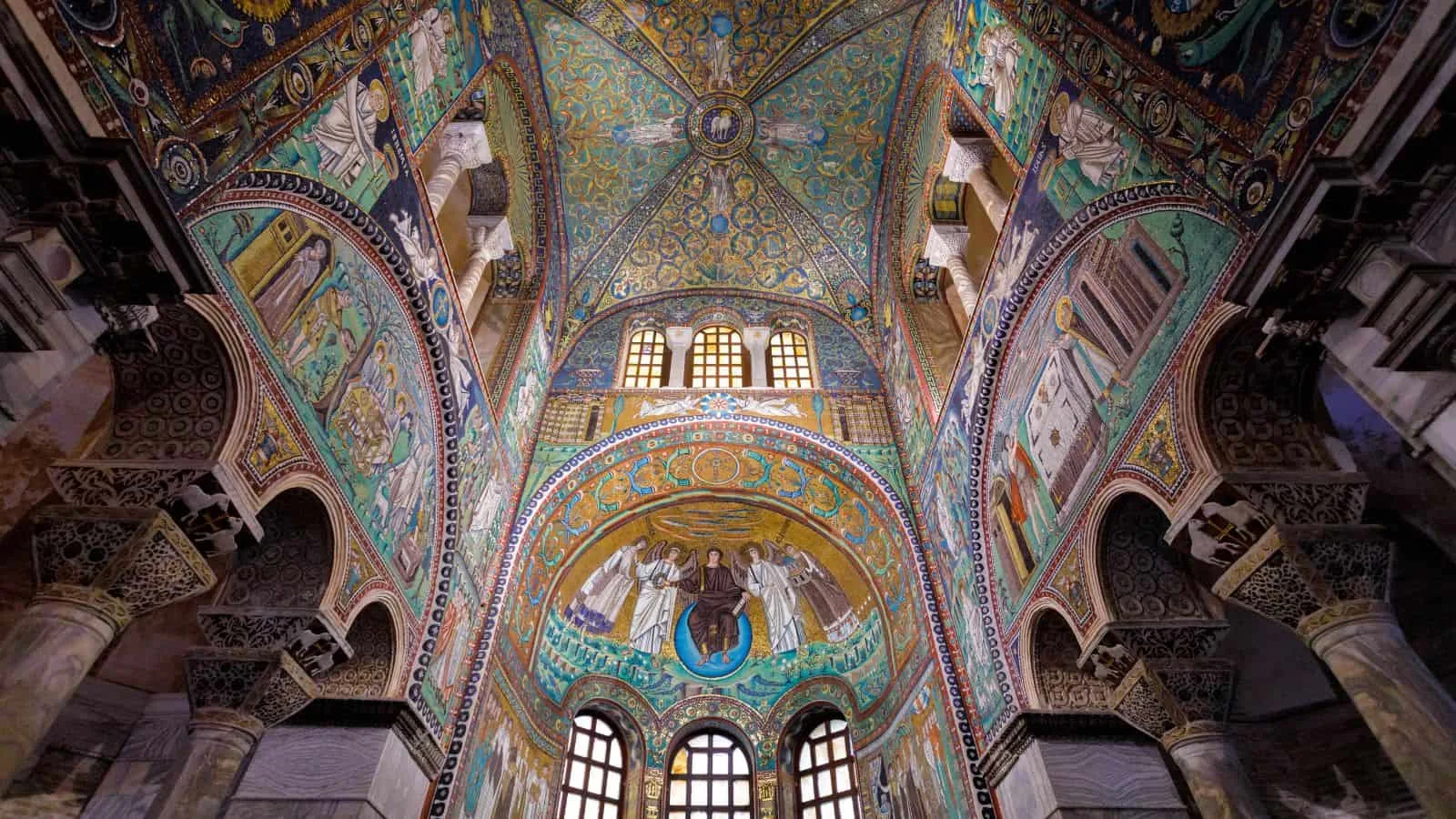
Ravenna is a mosaic—both in the Byzantine masterpieces that literally cover the city and in the mix of history, dining, and attractions. The Basilica di San Vitale is one of Ravenna’s most impressive and important tiled landmarks, along with the Mausoleum of Galla Placidia next to it. At the Basilica di Sant’Apollinare Nuovo, mosaics cover the walls, depicting rows of saints marching toward Jesus.
Dante, author of “The Divine Comedy,” rests in Ravenna. His tomb is a small mausoleum next to the Basilica of San Francesco. After paying your respects, give your appetite some attention. As part of the Emilia-Romagna region, the land of pasta, prosciutto, and cheese, Ravenna doesn’t disappoint on the culinary front. Find yourself a cozy trattoria like Ca’ de Vèn and order the cappelletti in brodo, pasta pockets floating in broth, and piadina, a thin flatbread filled with meat, cheese, and vegetables.
11. Ferrara
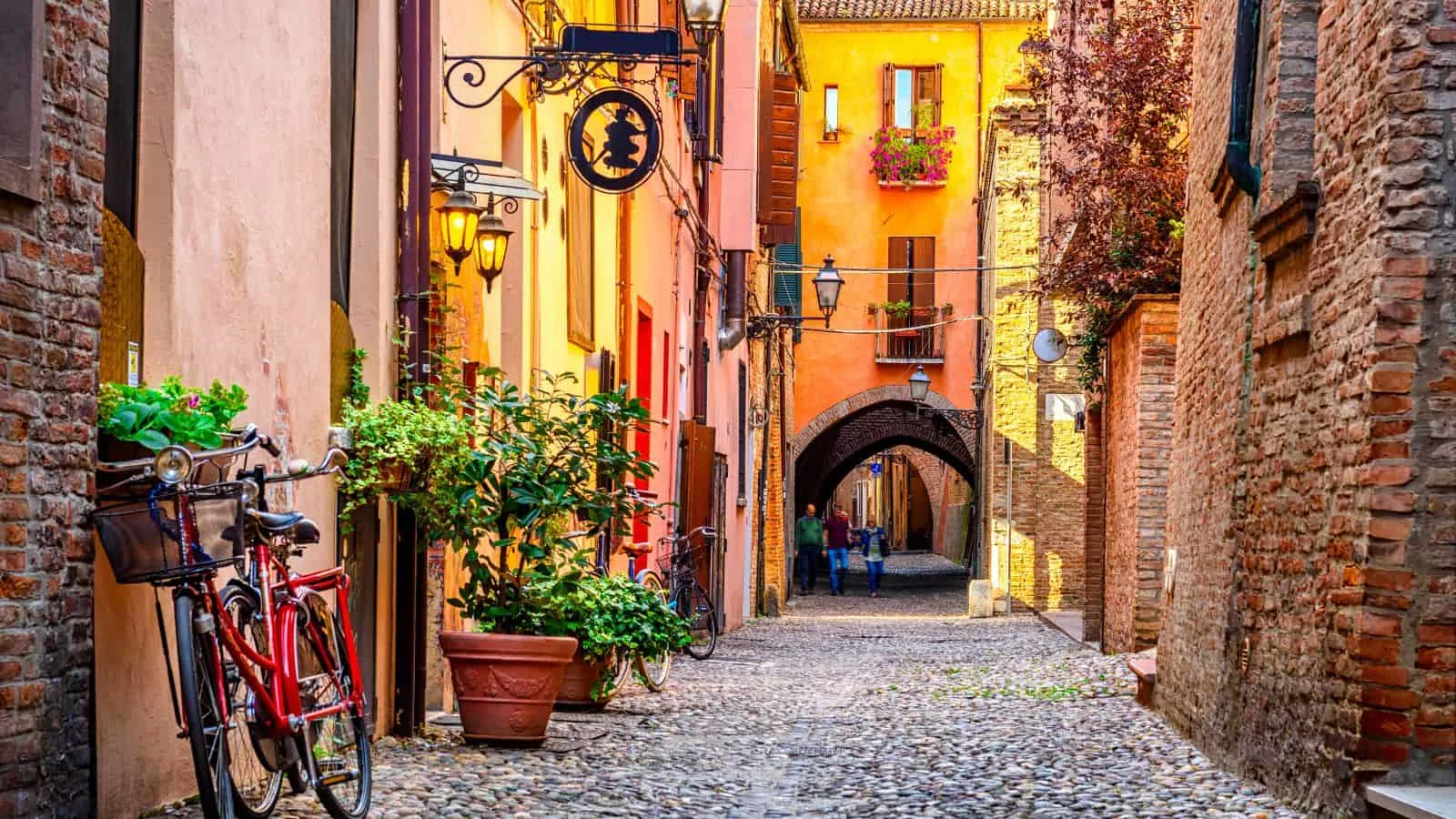
The Este family is responsible for many of the Renaissance landmarks that draw curious travelers to Ferrera, a UNESCO World Heritage Site. The ruling family built Castello Estense, which dominates the city with its large moat and four imposing towers. Also built by the Estes was the Palazzo dei Diamanti, which gets its name from the 8,000 marble, pyramid-shaped ashlars that cover it. Today, this palace features top-tier art exhibitions as the location for the Pinacoteca Nazionale di Ferrara (National Gallery of Art).
The Ferrara City Walls are some of the most well-preserved Renaissance walls in Italy. Rent a bike and pedal through the 9 kilometers of these ancient walls that encircle the city. Hop off and stroll Via delle Volte, one of the oldest streets in the city. When you’ve worked up an appetite, try salama da sugo, a traditional Ferrara dish of spicy sausage. Osteria del Ghetto is one of the best restaurants in the city for authentic regional cuisine.
12. Parma
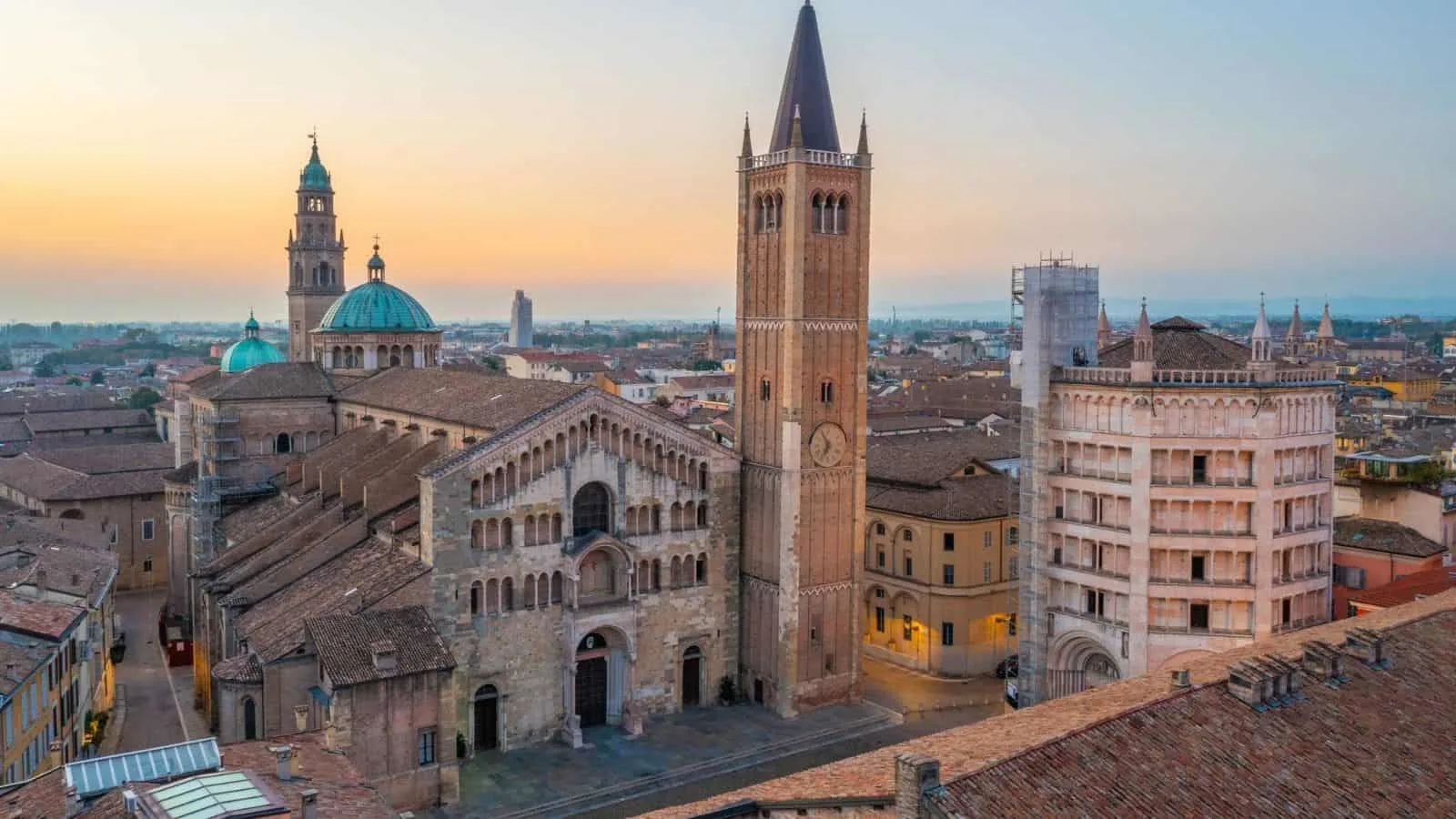
Parma is where two of life’s greatest pleasures were invented: prosciutto and Parmesan. As you might imagine, food is one of the main draws to this city in Emilia Romagna. Antica Osteria della Ghiaia and Trattoria Corrieri serve up some of the city’s finest Prosciutto di Parma with crusty bread, Parmigiano-Reggiano, and local Lambrusco. To learn more about the city’s namesake cheese, visit a caseificio (cheese factory) to see how it’s made. To take some of these local delicacies home, pay a visit to Mercato di Piazza Ghiaia before leaving.
Parma’s food fame doesn’t mean the city isn’t without some history. The Cattedrale di Parma is a Romanesque cathedral with ceiling frescoes by Correggio. Next door, the Baptistery of Parma is an octagonal beauty made from pink Verona marble. A couple blocks away stands Teatro Farnese, built in the 1600s. The Baroque masterpiece is one of the only all-wood theaters still standing today. Nearby, Palazzo della Pilotta is a grand palace complex converted into several museums, including the National Gallery of Parma, where you can see works by Correggio, Parmigianino, and other notable talent from the Renaissance.
13. Trento
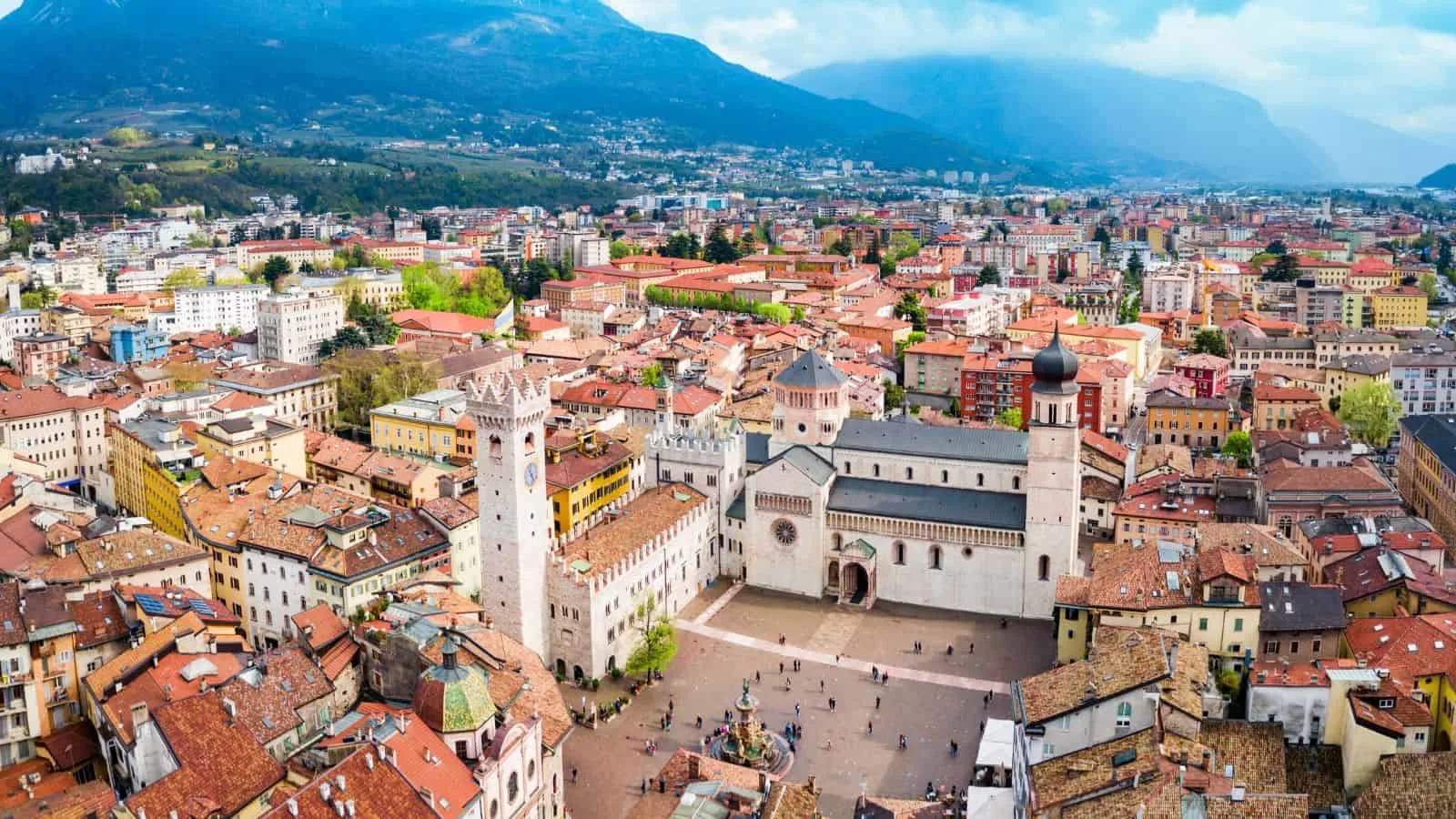
Trento is the third-largest city in the Italian Alps and, as a result, sets a historic town against the sweeping Dolomites for a picturesque scene. The Piazza Duomo is Trento’s main square. The Romanesque Cattedrale di San Vigilio is the piazza’s highlight, though the Fontana del Nettuno out in the center of the square is perfect for photos and people-watching.
Castello del Buonconsiglio is the Trentino region’s largest and most important castle. Wander through its halls and ramparts to view frescoes and the city from above. After, browse Via Belenzani, one of the main streets in the old town, for souvenir shopping and a bite like canederli (dumplings) and strangolapreti (spinach and bread dumplings) along with a glass of local Teroldego wine.
14. Mantua (Mantova)
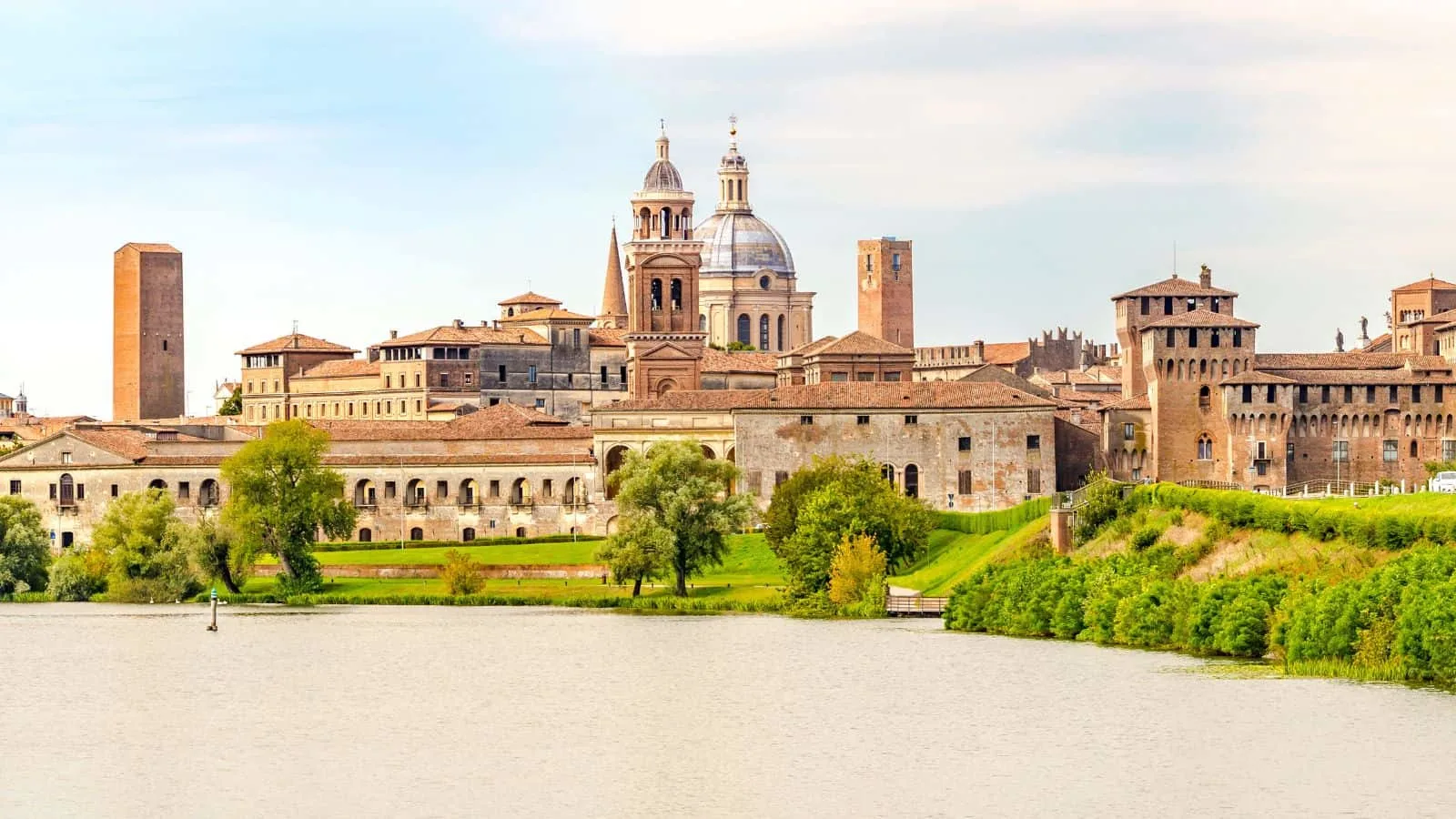
One of the largest Renaissance palaces in Europe, Mantua’s Palazzo Ducale stretches 34,000 square meters and includes over 500 rooms. The palace was once home to the powerful Gonzaga family, but these days, you’re more likely to find travelers getting lost in the fresco-covered Sala dei Giganti or examining the Camera degli Sposi (The Bridal Chamber), painted by Andrea Mantegna. The Gonzaga family threw parties at a separate, over-the-top location in the suburbs, Palazzo Te, which can also be visited.
Mantua’s Old Town is a UNESCO World Heritage Site for its medieval and Renaissance architecture. Piazza delle Erbe is the city’s main square, which connects the Torre dell’Orologio (Clock Tower) and the Rotonda di San Lorenzo, a round church from the 11th century. Sant’Andrea Basilica, a Renaissance church designed by Leon Battista Alberti, claims to have a vial of Christ’s blood, while Teatro Bibiena, where Mozart once performed, is just as beautiful during a show as it is on a tour.
15. Modena
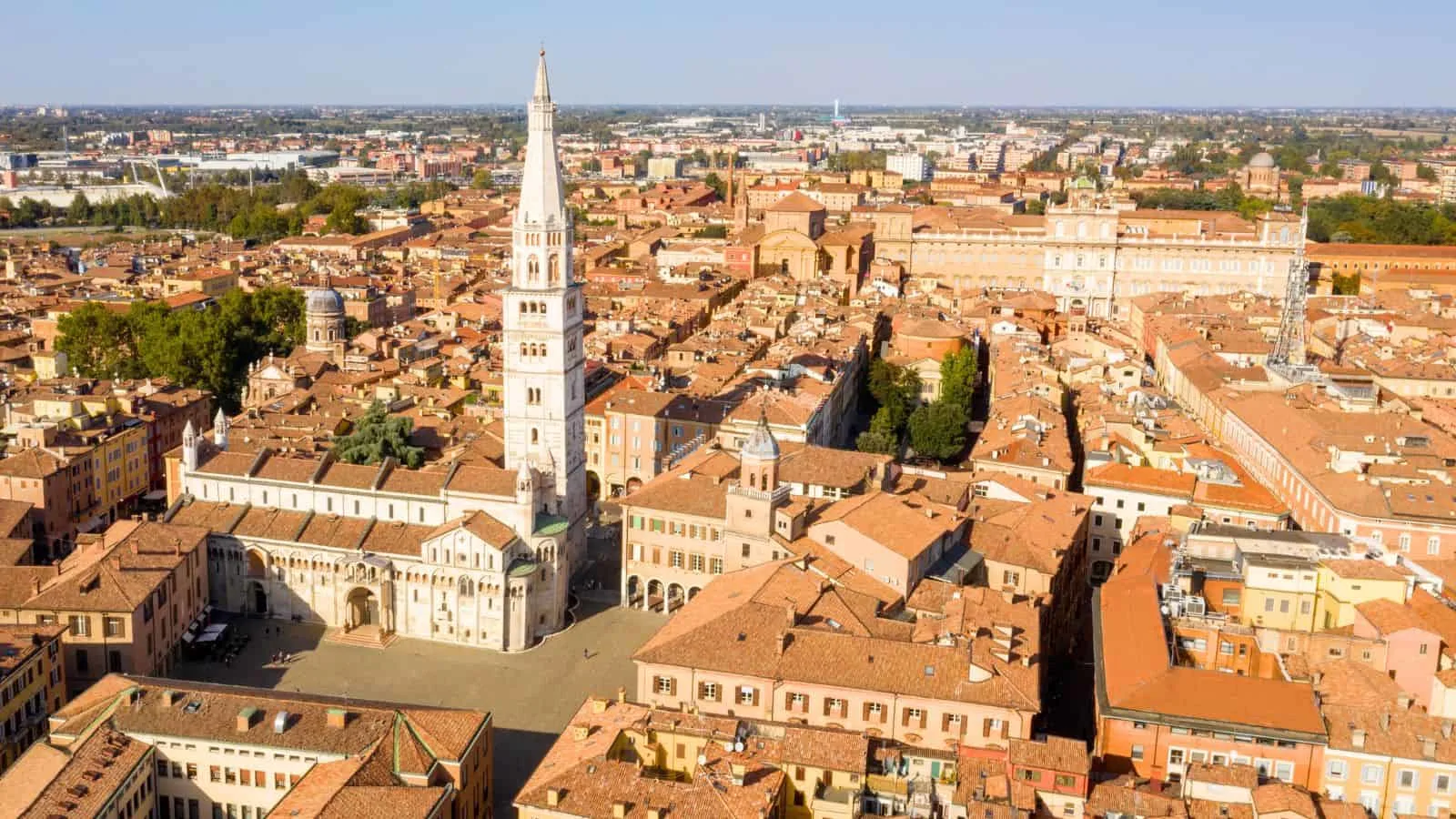
If Modena rings a bell, it’s likely because you’ve seen it on the wrapper of a balsamic vinegar bottle, not because you’ve considered it as a travel destination. Yet, the city makes for a lovely Italian vacation, regardless of whether you’re there for the food or the history.
Aceto Balsamico Tradizionale di Modena is the city’s prized creation, far out-tasting whatever you’ve found at the grocery store back home. Acetaia di Giorgio and Acetaia Malpighi have tastings of this vinegar, aged up to 25 years. Another source of pride for the city is its cars—Modena is home to supercar manufacturer Ferrari. Just outside the city, you’ll find the Museo Ferrari in Maranello—book a test ride while you’re there.
The Duomo di Modena is a 12th-century UNESCO World Heritage site. Climb the Ghirlandina Tower while you’re there for some of the best views of this delightful city.
16. Siena
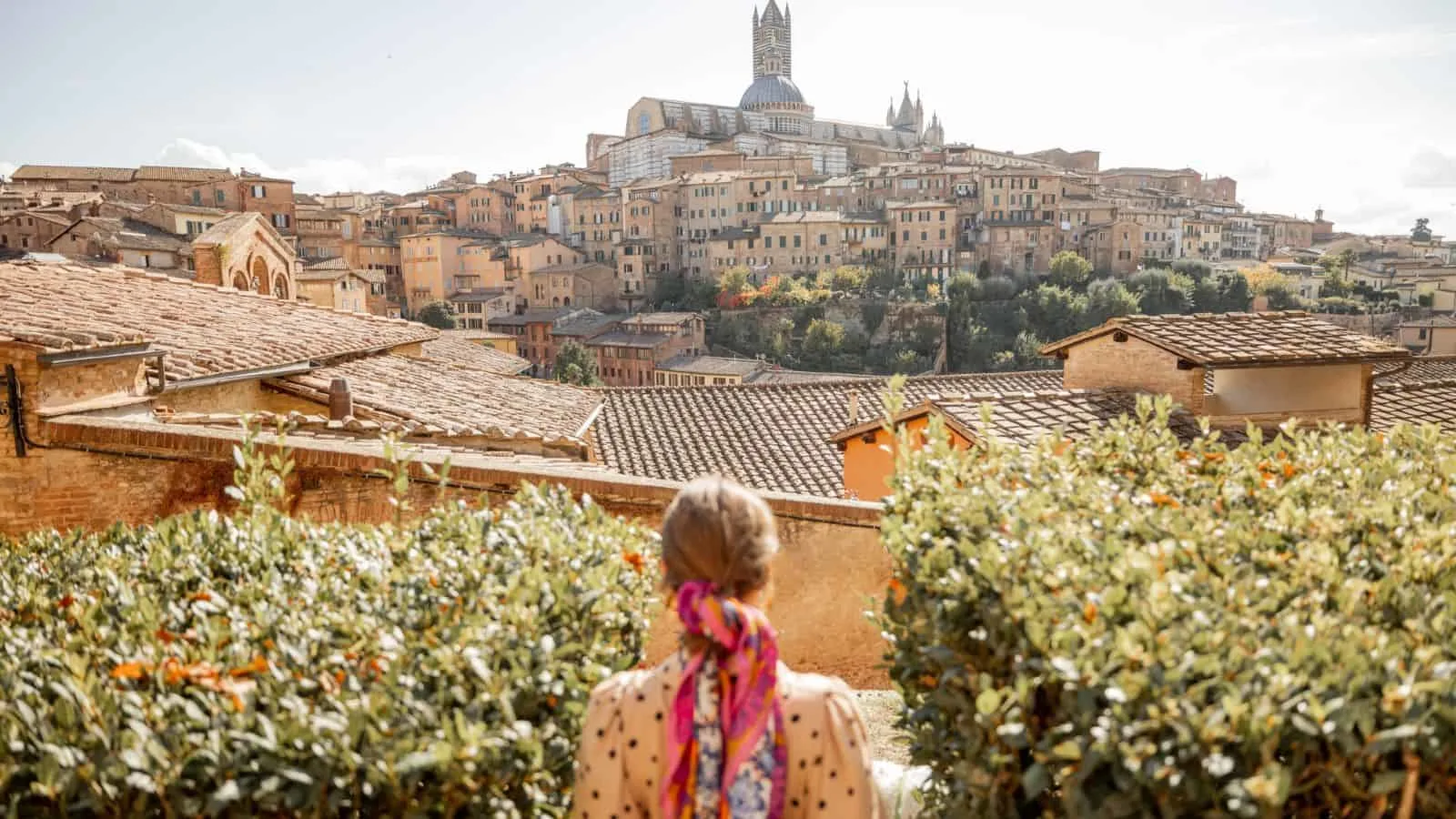
Shell-shaped and sloped, Piazza del Campo is arguably one of the most unique squares in the world. Twice a year, this piazza turns into the arena for the Palio di Siena, an intense horse race held since the 1600s. Nearby, the Duomo di Siena (Siena Cathedral) is a stunning example of Gothic and Romanesque architecture, covered in mosaics and frescoes.
Italy is known for its wine, and Siena makes for a wonderful home base to explore this tradition. Take a day trip to the Chianti wine region and stop at local wineries like Castello di Brolio for a tasting of Chianti Classico. If you don’t want to deal with the hassle of carrying bottles home with rough baggage handling, weight restrictions, and customs to face, know that many wineries in Italy are willing to ship.
Skip the Amalfi Coast—Cinque Terre is Italy’s seaside gem
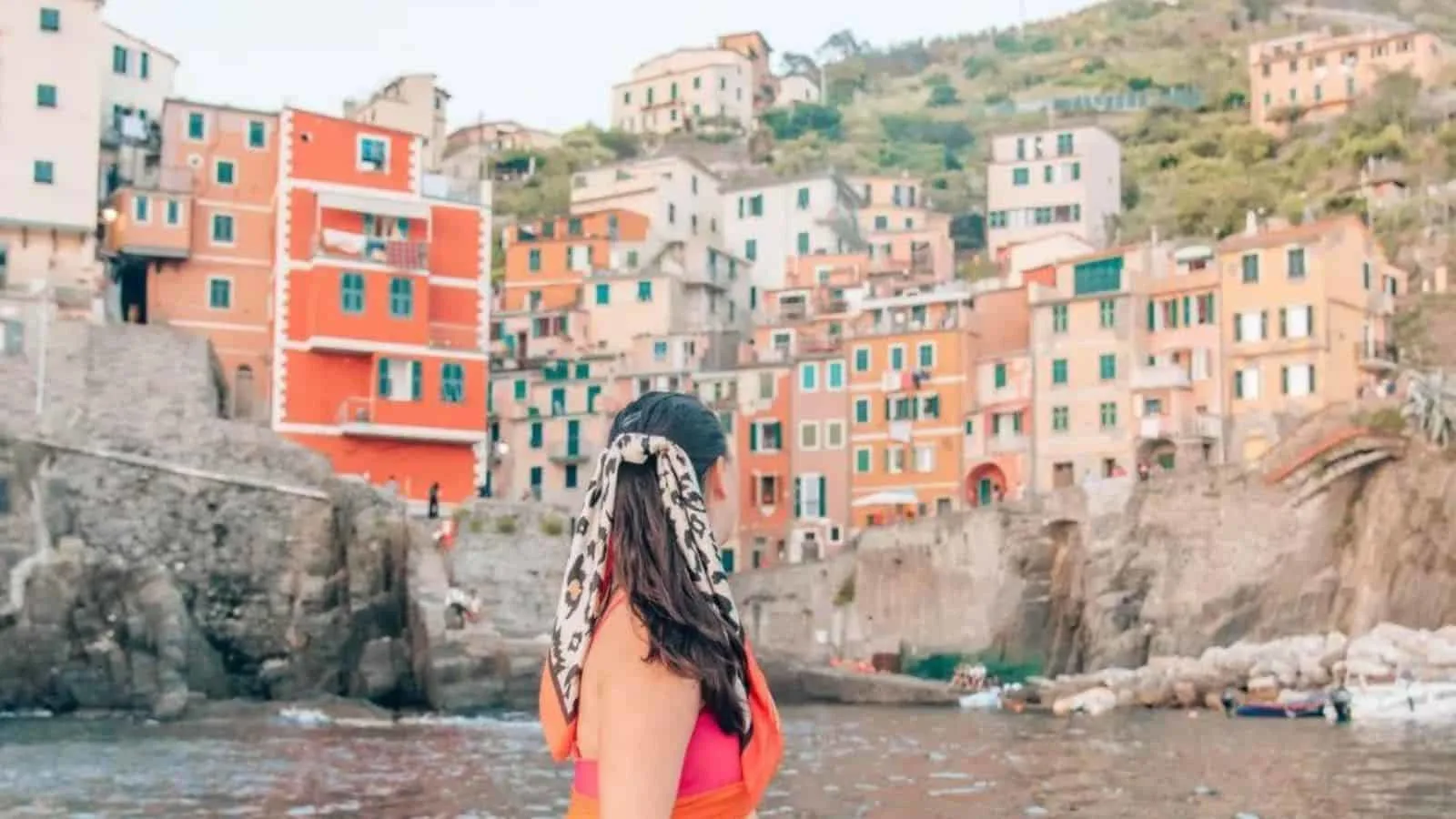
Tourists flock to popular Amalfi Coast destinations like Positano and Naples, skyrocketing prices and causing massive traffic and crowds to pile up. Though Cinque Terre is popular, it’s far more relaxed and affordable year-round.
Top Things to Do in Cinque Terre: The Ultimate Travel Guide
Milan has plenty of sights worth seeing
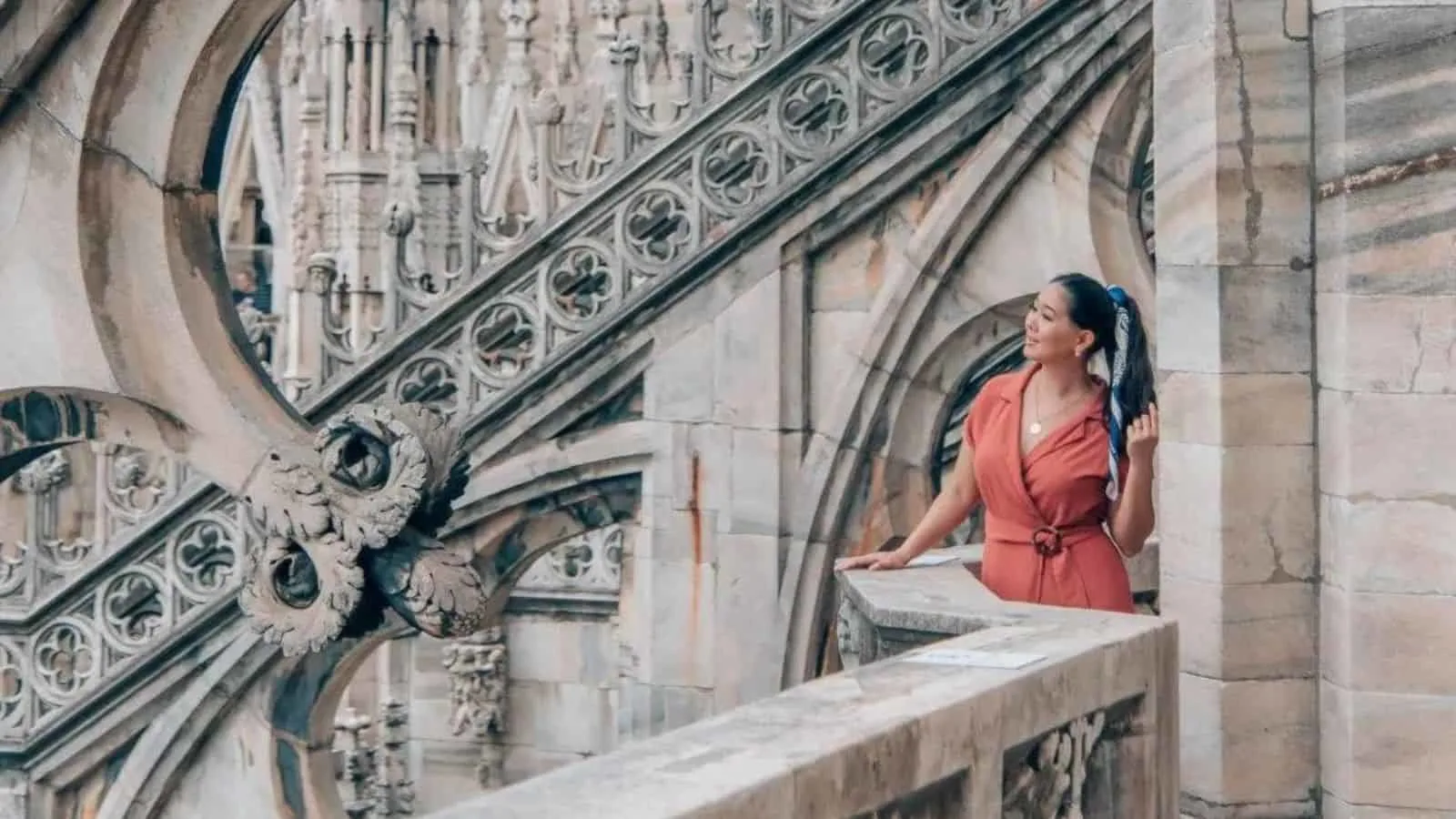
There’s more to Milan than the grandiose Duomo di Milano.
Milan Attractions: Top 12 Things to See in Milan

Elise Armitage is an entrepreneur and founder of What The Fab, a travel + lifestyle blog based in California. At the beginning of 2019, Elise left her corporate job at Google to chase her dreams: being an entrepreneur and helping women find fabulous in the everyday. Since then, she’s launched her SEO course Six-Figure SEO, where she teaches bloggers how to create a passive revenue stream from their website using SEO. Featured in publications like Forbes, Elle, HerMoney, and Real Simple, Elise is a firm believer that you can be of both substance and style.



